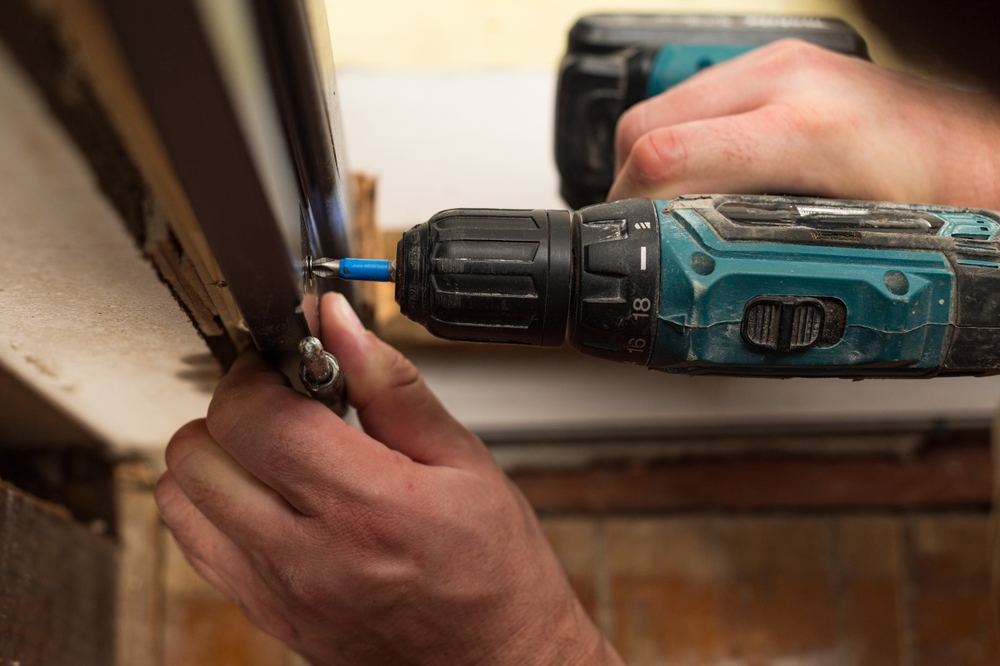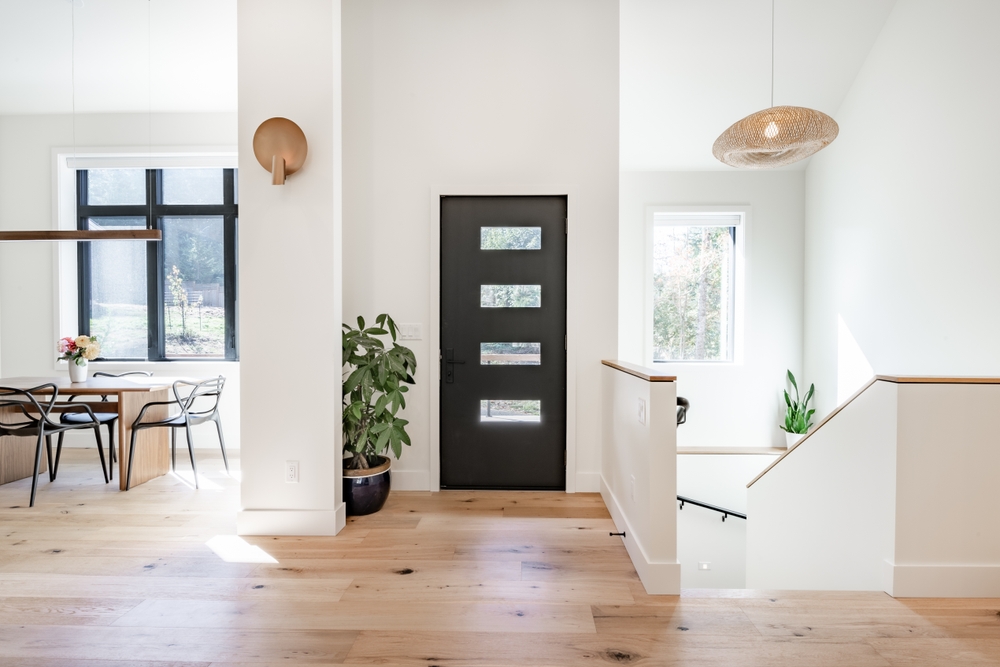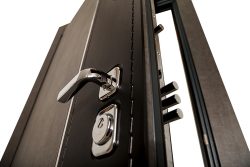
Your doors are more than just an entryway — they’re the first line of defense for your home’s safety, the guardian of your privacy, and an important part of your property’s overall aesthetic. Over time, however, even the sturdiest door frames can start to show signs of wear and tear, which can affect their performance, security, and visual appeal. If you’re wondering whether it’s time for a door frame replacement, there are several red flags you shouldn’t ignore. Knowing these signs early can help you maintain secure doors, improve energy efficiency, and enhance your home’s curb appeal.
Visible Damage and Wear
The most obvious sign that your door frames may need replacing is visible physical damage. This can include cracks, splits, dents, warping, or rotting, depending on the material of your door frame. Wooden frames, for instance, are prone to moisture damage, which can lead to swelling and eventually rot. If you notice areas where the wood feels soft or crumbly to the touch, the structural integrity of the frame has been compromised.
Metal frames aren’t immune to problems either. Rust can slowly eat away at steel or aluminum frames, weakening their ability to support the door’s weight. Even composite or PVC frames can deteriorate over time, especially under prolonged exposure to UV rays or extreme temperatures. Damage not only affects the aesthetics of the frame but can also create vulnerabilities that compromise the security of your home. A frame with significant wear may not hold the lock securely, leaving your home at greater risk.
In many cases, homeowners might try to patch up small areas with filler or sealant. While this may work temporarily, it’s not a long-term solution. Once the damage has reached a certain point, replacement is the only way to restore the strength and reliability needed for secure doors.
Difficulty Opening and Closing the Door
Another common sign that it’s time for a door frame replacement is difficulty in operating the door. If you find yourself needing to push or pull harder than usual, it could indicate that the frame has shifted, warped, or become misaligned. Seasonal humidity can cause temporary swelling, especially in wood, but if the problem persists regardless of weather changes, the frame’s shape may be permanently altered.
A warped frame can throw off the door’s alignment, leading to gaps that allow drafts, moisture, and even pests to enter your home. More importantly, these gaps can undermine the security of your entryway. A misaligned lock, for instance, might not latch properly, which poses a safety risk.
In some cases, the issue may be due to settling of the house foundation, which can subtly change the frame’s positioning. However, even if the underlying cause is unrelated to the door itself, the frame might need replacement to ensure the door functions smoothly and provides the security your home requires.
Drafts, Moisture, and Light Gaps
If you can feel cold air coming through the edges of your closed door in the winter, or warm air in the summer, it’s a strong indication that the door frame’s seal has been compromised. Drafts are more than just uncomfortable — they can lead to higher energy bills as your HVAC system works harder to maintain the desired indoor temperature.
Moisture intrusion is another critical issue. Water can seep through gaps in the frame, damaging not only the door but also surrounding walls and flooring. Over time, this can promote mold growth, which carries health risks and can be expensive to remediate.
Light coming through where the door meets the frame is an unmistakable warning sign. While small amounts of light leakage can sometimes be fixed with weatherstripping, persistent gaps suggest the frame is no longer fitting properly. For secure doors that keep both intruders and the elements at bay, replacing the frame is often the best solution.
Signs of Pest Infestation
Pests love damaged door frames, especially wooden ones. Termites, carpenter ants, and other insects can chew through the wood, creating hollow areas that weaken the structure. Rodents may also gnaw on frames to gain access to your home.
Evidence of pests can include tiny holes, wood dust, or droppings near the frame. You might also notice the frame feels unusually light or hollow when tapped. Once pests have compromised the frame, repairs are often insufficient, as the structural damage is already done and can spread.
Replacing the door frame not only removes the damaged material but also gives you the chance to choose pest-resistant materials. Many homeowners opt for composite or treated wood, which can better withstand pest activity, helping maintain secure doors for the long term.
Outdated or Inefficient Security Features
Even if your door frame appears to be in good physical condition, it might still be time for an upgrade if it lacks modern security features. Older frames may not have the reinforced strike plates or multi-point locking systems common in newer designs. This can make them easier for intruders to breach.
In some cases, the screws holding the strike plate may be too short, anchoring only into the frame material rather than the structural studs behind it. Replacing the entire frame allows you to install enhanced hardware that significantly improves security.
Additionally, a frame replacement gives you the opportunity to upgrade the material and design for better performance. Steel-reinforced frames, for example, provide exceptional resistance against forced entry while still maintaining an attractive appearance. This not only boosts your home’s protection but can also increase its resale value, as secure doors are a selling point for many buyers.
Conclusion
Door frames are an often-overlooked but essential component of your home’s security, energy efficiency, and visual appeal. Recognizing the signs that it’s time for a door frame replacement can save you from costly repairs, higher utility bills, and potential safety hazards. Whether it’s visible damage, difficulty operating the door, gaps that let in drafts and moisture, pest infestations, or outdated security features, each sign is a clear signal that action is needed.
Investing in a high-quality replacement frame not only restores functionality and improves security but also enhances your home’s overall comfort and style. Secure doors start with strong, well-maintained frames — and replacing them at the right time ensures you and your family stay safe, comfortable, and protected for years to come.
Need a Locksmith Near You?
We have been servicing the Greater Fairfax/DC area for over 40 years with services for residential, commercial, and automotive clients alike. We are proud to offer you the best locksmithing service in Fairfax, Arlington, Loudoun, Prince William counties, and the surrounding communities. Our professional locksmiths are here to handle any job. At Artie’s Lock and Key, we are fully equipped with the latest tools and professionally trained to handle locks of all kinds. Contact us to purchase a new lock, new car key or remote, rekey, or to schedule a job for repair or installation. The team at Artie’s Lock and Key can work on all your transponder keys, commercial locks, panic bars, and more. We are fully licensed, bonded, and insured. Contact us today to learn more about what we can do for you!

Door frames may seem like a small detail in the grand scheme of a home or commercial building, but they play a surprisingly important role in overall energy efficiency. While much attention is given to wall insulation, window glazing, and HVAC systems, the humble door frame often remains in the background. Yet, it is precisely these structural components that help maintain airtight seals, minimize energy loss, and ensure optimal thermal regulation. By understanding how door frames contribute to energy efficiency, property owners can make more informed decisions about installation, maintenance, and upgrades, leading to measurable cost savings over time.
How Door Frames Affect Thermal Performance
Every building has points of vulnerability where heat can escape during the winter and enter during the summer. These areas, known as thermal bridges, include doors, windows, and any structural gaps. Door frames, if poorly constructed or installed, can become major contributors to unwanted thermal exchange.
The role of the frame is not just to hold the door in place but to create a stable, insulated border that reduces the transfer of heat or cold air between the interior and exterior. The choice of materials—whether wood, fiberglass, aluminum, or a composite—directly impacts thermal performance. For example, wood has natural insulating properties, while metal frames can conduct heat unless they incorporate a thermal break. Properly fitted weatherstripping, insulation foam, and seals around the frame are critical to ensuring the door assembly achieves its full energy efficiency potential. A tight fit reduces drafts, preventing the HVAC system from overworking and ultimately leading to cost savings on utility bills.
The Connection Between Air Leakage and Energy Efficiency
Air leakage is one of the most significant ways energy efficiency is compromised in a building. Even small gaps between the door and frame, or between the frame and wall, can have an outsized impact on indoor climate control. When warm air escapes in winter or hot air infiltrates during summer, the building’s heating and cooling systems must work harder to maintain comfortable temperatures. This extra workload translates directly into higher energy consumption and increased costs.
Door frames, when designed and installed with precision, form a primary defense against these losses. Modern building codes and energy standards increasingly emphasize the importance of airtight construction. High-quality door frames with integrated seals and gaskets help eliminate gaps that can lead to energy waste. Additionally, maintaining the integrity of the door frame over time—by replacing worn-out weatherstripping or sealing cracks—can prevent the gradual increase in air leakage that often goes unnoticed until energy bills begin to climb. This attention to detail can provide consistent cost savings throughout the lifespan of the building.
Material Selection and Insulating Properties
The material of the door frame plays a decisive role in determining how well it contributes to a building’s energy efficiency. Each material comes with its own insulating characteristics, durability, and maintenance requirements. Wood is a traditional choice, appreciated for its natural insulating abilities and aesthetic appeal. However, it requires protection against moisture and temperature fluctuations to maintain performance over time. Fiberglass frames offer excellent energy efficiency because they do not warp or conduct heat easily, making them a popular choice for modern energy-conscious designs.
Aluminum frames are lightweight and durable, but because aluminum is a highly conductive material, it requires a thermal break to be energy efficient. Composite frames, which combine materials like wood fiber and polymer, are engineered to deliver both strength and insulation. When paired with an energy-efficient door, the right frame material can significantly reduce heat transfer, keep indoor temperatures stable, and deliver long-term cost savings. Choosing the right material for the local climate conditions and building design is an essential step in maximizing performance.
Installation Quality and Long-Term Maintenance
Even the best materials and most advanced door frame designs can fail to deliver their intended energy efficiency benefits if installation is subpar. Precise alignment, correct sealing, and proper integration with the surrounding wall are all crucial for preventing thermal leaks. Installers must ensure that the frame is square, level, and securely anchored to prevent shifting that could create gaps over time.
Long-term maintenance is equally important. Weatherstripping and door seals degrade naturally through repeated use, exposure to temperature extremes, and humidity changes. Regular inspections, especially before the start of heating or cooling seasons, can identify early signs of wear. Simple actions like replacing worn gaskets, reapplying caulk, or adjusting hinges to maintain proper alignment can help retain the frame’s energy efficiency. Ignoring these small tasks can lead to larger performance issues, diminishing comfort and driving up energy costs. Thus, both installation and maintenance are ongoing contributors to cost savings.
Conclusion
Door frames may not be the first element people think of when considering energy efficiency upgrades, but their role is both fundamental and far-reaching. They serve as the boundary between controlled indoor environments and fluctuating outdoor conditions, influencing how much energy is required to maintain comfort. From material selection and thermal properties to precise installation and regular maintenance, every aspect of a door frame’s design and care affects performance. By investing in high-quality, well-installed door frames and ensuring they remain in peak condition, property owners can significantly reduce air leakage, enhance insulation, and realize consistent cost savings. In the broader context of sustainable building design, paying attention to these often-overlooked details is a simple yet powerful way to maximize energy efficiency and extend the life of both the door and the building itself.
Need a Locksmith Near You?
We have been servicing the Greater Fairfax/DC area for over 40 years with services for residential, commercial, and automotive clients alike. We are proud to offer you the best locksmithing service in Fairfax, Arlington, Loudoun, Prince William counties, and the surrounding communities. Our professional locksmiths are here to handle any job. At Artie’s Lock and Key, we are fully equipped with the latest tools and professionally trained to handle locks of all kinds. Contact us to purchase a new lock, new car key or remote, rekey, or to schedule a job for repair or installation. The team at Artie’s Lock and Key can work on all your transponder keys, commercial locks, panic bars, and more. We are fully licensed, bonded, and insured. Contact us today to learn more about what we can do for you!
 Guide to Maintaining Steel Security Doors
Guide to Maintaining Steel Security Doors
Steel security doors provide excellent protection for our homes and businesses against intruders. They are incredibly strong and durable, able to withstand harsh weather conditions, and provide an exceptionally long service life. However, like all other doors, steel security doors require maintenance to keep them in excellent condition. In this blog post, we outline some tips and tricks to help you maintain your steel security doors to ensure they remain functional for years to come.
Regular Cleaning
One of the simplest ways to maintain a steel security door is by keeping it clean. Regular cleaning with a soft cloth and a mild detergent, followed by a rinse with clean water, should be done on a weekly basis. This simple practice can remove dust and dirt that could block the locking mechanisms or interfere with the door’s operation. In addition, cleaning the door’s hinges, locks, and other hardware with dry silicone lubricant will keep these components working smoothly.
Check Batteries and Electrical Components
If your steel security door features an electronic locking system, check the batteries periodically to ensure that they have sufficient charge. A low battery can cause the door lock to fail, making it impossible to open or close the door. Check the wiring for signs of wear or damage, and replace any defective components promptly.
Keep the Door Dry
Steel security doors can withstand harsh weather conditions, but they are still susceptible to rust, especially if exposed to moisture for an extended period. To prevent rust from forming, it’s essential to keep the door dry. Avoid spraying water directly onto the door, and instead, use a soft cloth to wipe out any moisture. It is also crucial to ensure that the door’s weatherstripping is intact and sealing correctly.
Inspect the Door Regularly
Regular inspections of the steel security door will allow you to identify any issues before they become serious. Check the door’s hardware, hinges, and locking mechanisms to ensure they function correctly. Test the door’s opening and closing repeatedly to make sure it is not jamming. Finally, inspect the door’s frame for cracks, fissures, or damage.
Remove Rust
If rust is already present on the steel security door, remove it immediately to prevent it from spreading. Using a wire brush, gently scrub off the rust while wearing a pair of gloves. Be sure to get into the nooks and crannies of the door’s surface. After scrubbing off the rust, use a rust inhibitor treatment to prevent new rust from forming. Remember to repaint the treated area to restore the door’s original appearance and protect it from further rust.
Repair or Replace Damaged Parts
If any of the components of your steel security door are not working correctly, they should be repaired or replaced as soon as possible. Replacing your steel security door’s hinges, locks, or seals is relatively simple and can be done by someone with basic repair skills. However, if it’s beyond what you are capable of, hire an experienced professional to fix it. A professional technician knows about the right tools and techniques to replace or repair damaged parts, and they can do it quickly and safely.
Consider Upgrades
Over time, your steel security door may need some improvements or upgrades to maximize its performance. For instance, installing a peephole will enhance your security by allowing you to see who is at the door without opening it. If you’re concerned about the door’s appearance, you can have it painted to match the color of your home. Upgrading to a better lock or lock system can significantly increase your home’s security levels, giving you peace of mind. It is always best to work with a professional security expert. They can evaluate your needs and help you pick the right upgrade to enhance your door’s functionality.
Final Thoughts
Proper maintenance and care of your steel security door is essential to ensure its longevity and functionality. With regular cleaning and inspections, you can catch any issues early, so they don’t become major problems. Keep the door dry, check for rust, and ensure the electronic components are working correctly. Finally, repair or replace any damaged parts or consider upgrading your security system. By following these tips, you can maximize your steel security door’s lifespan and keep your home or business secure.



 Guide to Maintaining Steel Security Doors
Guide to Maintaining Steel Security Doors